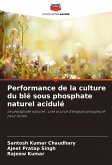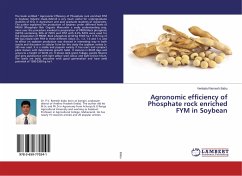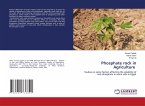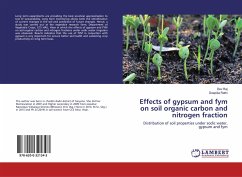A field experiment was conducted in 2009-10 at N. E. Borloug Crop Research Centre of G.B. Pant University of Agriculture and Technology, Pantnagar (India), in Randomized Block Design with 3 replications with ten treatments viz., single super phosphate (SSP) alone, RP alone, RP + gypsum, RP + SSP, RP + PSB, RP + FYM, RP + FYM + PSB, RP + pressmud (PM), RP + PM + PSB and RP + pyrite. RP + gypsum produced maximum grain yield (49.2 q/ha), biological yield (120 q/ha), plant height, shoot population, dry matter accumulation and yield attributes viz., spike length, number of fertile spikelets per spike and number of grain per spike, over other treatments and recorded highest benefit: cost ratio. From this experiment it has been concluded that RP + gypsum each 300 kg/ha in 1:1 ratio found best in terms of wheat yield and B:C ratio.
Bitte wählen Sie Ihr Anliegen aus.
Rechnungen
Retourenschein anfordern
Bestellstatus
Storno








